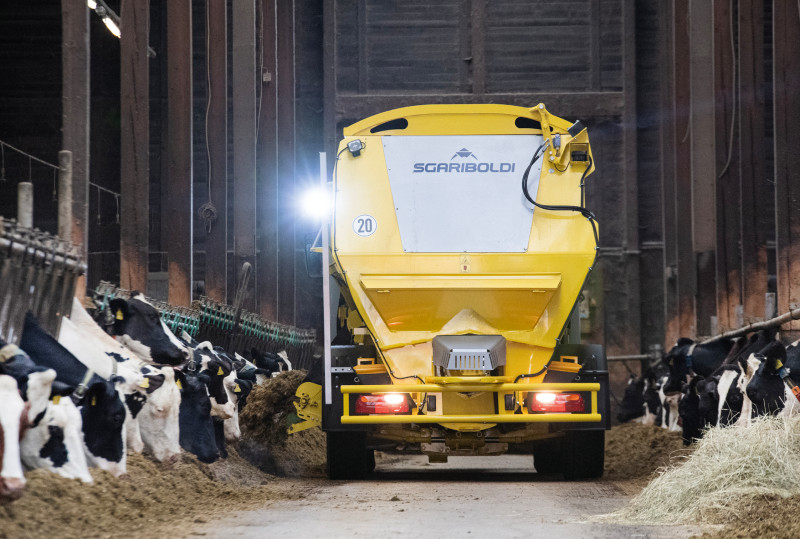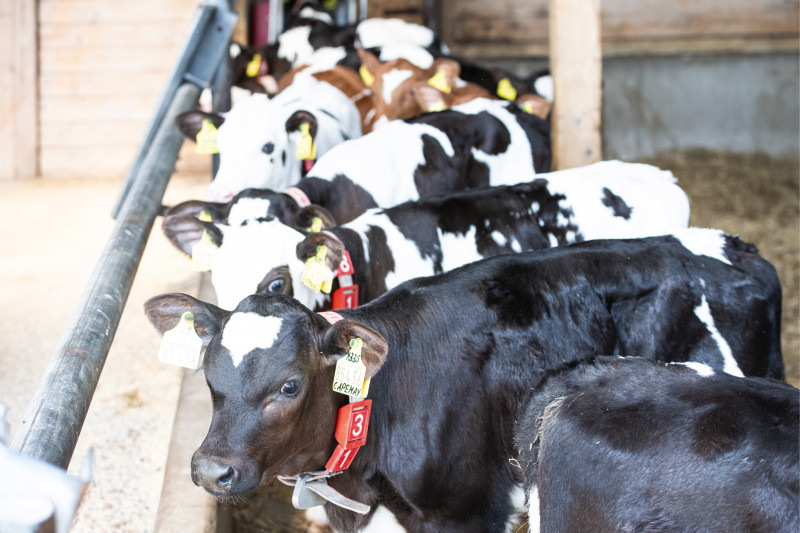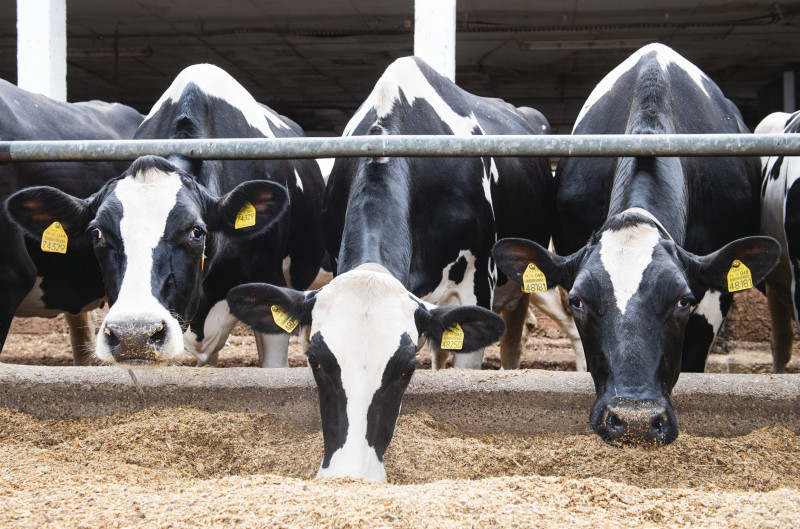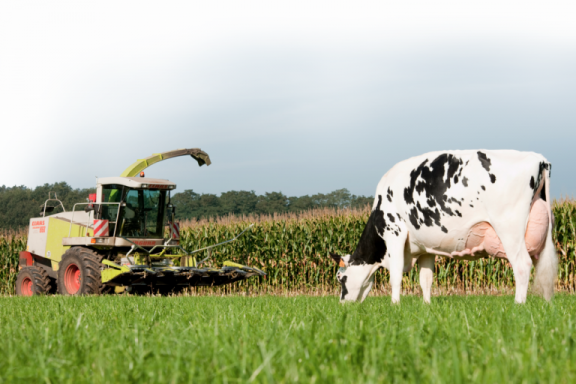
The biggest talent of the dairy cow is to take high-fibre forages, which cannot be used for human nutrition, and convert them to high-quality foods like milk and meat. What are forages really? How does one achieve maximal forage quality? And is it true that it is more economical to get more milk from forages? The answers to these questions are given by three experts in this area: Dr. Norbert Göres (veterinarian and nutritionist at Sano – Modern Animal Nutrition), Gordon Marley (Global Silage Support Lead at Alltech) and Martin Cazot (Marketing and corn expert at Limagrain).
JACQUES BERNARD, CHRISTINE MASSFELLER
The definition of forage is very complex and is differently interpreted depending on the person or the region. Forages can be a lot of things: for one, structural, high-fibre feed that cannot be used for human consumption. Or feed produced on farm, whose energy value is below 7.0 MJ NEL/kg DM. For the one it is already borderline to count straw as a forage, while other components like brewers’ grains, pressed pulp, beets and potatoes also count. One thing that most can agree on though is that grass, in all its forms, counts as a forage. However: is an immature pasture with 22% crude protein, 15% sugar and low fibre really a forage component from a feeding perspective? With these examples, you can see how complex the topic really is, and we do not want to define what is right or wrong. What we know is that forages are the basis for a diet suitable for ruminants in order to achieve healthy rumen function and the highest possible feed efficiency. The topic of animal health should be part of the focus, as it is directly linked with production and thereby profitability. For the latter, the IOFC (Income Over Feed Cost) is the most important parameter for an objective evaluation. The more money is left after subtracting feed costs, the lower the feed costs per kg of milk are (for example), and so one shouldn’t be initially blinded by cost per cow and day or cost per kg DM. The biggest challenge in feeding is rather, in view of the given anatomical factors and the volume limitations of the digestive organs, particularly the rumen, to provide as many useful nutrients as possible in the form of feed. ‘The art of achieving high feed intake is dependant on the consistency and balance of the feed, as well as the quality and digestibility of the feed components,’ explains Dr. Göres. To achieve this, another metric shouldn’t become distracting: grams of concentrate feed per kg DM or grams of concentrate per kg milk. There is no general target value for these parameters. For an objective economical evaluation of feeding, these values are unfortunately thoroughly unsuitable. In the case of a needs-based feeding, your herd will convert the fed ration into production with high efficiency. And this with maximal animal health, which can then be recognized with a higher IOFC. And particularly in today’s times, the affordability of forages should be put under the microscope. Do you know how much your forages cost per kg DM? If not, then calculate the costs in detail once. Even haylage, depending on field conditions, rent price, cut frequency, fertilization and equipment capital can quickly reach €0.20 per kg DM. If you have a lot invested in your own equipment and do a lot, or most, of the work yourself, think about the opportunity costs. The impact of, for example, some of the work in the barn not being done thoroughly during harvest time, is often considerable and the capital investment could also perhaps be better used somewhere else. Assuming your haylage costs about €0.20 per kg DM, it could, in terms of energy, make sense, given the current grain prices, to actually slightly increase concentrate feeding. However, we do not want to give any recommendations as to whether you should feed more forages or concentrates. Rather, we want to encourage you to validate your individual situation – alongside the other individuals responsible on your farm – and see whether there are opportunities for optimization. The most important thing is quality of the feed components and high-quality forages show themselves through good components, high digestibility, and excellent hygiene.
PREPARATION
In the following, we want to limit ourselves to the production of haylage and corn silage, and for this the experts agree that the deciding factor is good, professional ensiling practices. ‘The goal is to have as few qualitative and quantitative losses between the field and the feed manger as possible’ says Marley, who underlines that good preparation is very important. This includes selecting the right varieties, clean and sound silos, suitable covers (silage plastic, protective netting and bags), appropriate silage additives and coordination between all participants and keeping an eye on the weather.
HARVEST
The harvest time point for grass is primarily influenced by factors like variety, growth stage and time of the last fertilization. It should be made in conversation with the planting advisor so that the best time is determined for good quality as well as desirable yield. Next, the degree of wilting should be selected so that the DM of the haylage after is between 30-35%. To achieve this as best as possible, factors like time of day for cutting and hours of sunlight play a role. For corn silage there are similar conditions that should be monitored, according to Cazot: ‘The optimal harvest time for corn is at a DM between 32-35%, so that starch is optimally developed, no sugar loss occurs from water draining, and good compaction can be achieved. With “LG agrility.harvest” and “LG agrility.yield” we have two tools at Limagrain that use satellite imagery to determine the optimal harvest point early on and predict yield. This allows early coordination with the people doing the harvesting as well as planning the feeding throughout the entire year.’
To limit contamination of the silage for both crops, adequate cutting height should be selected and the chop quality should be continuously monitored. ‘To reduce selection by the cows during feeding, homogenous particle length is important, and the ration does not get too short for the cow very quickly. Particles >4mm are physically effective in the rumen. However, one thing to watch for in practice is that the chop length for wetter haylage does not get too short, as it increases the risk of sliding off the pile or breaking apart,’ explains Dr. Göres. For corn silage, chop quality should be monitored so that per litre of corn silage, maximally two halved corn kernels can be found, as bigger corn grain components require an adjustment of the chopper and particularly the corn crackers.
ENSILING PROCESS
The first step for a good ensiling process is the packing. For this, it is important to layer the silage thinly and pack it well. The total weight of all packing tractors should be one third of the weight of silage arriving per hour. For optimal fermentation, oxygen is pushed out of the silo and is prevented from quickly penetrating the face of silo when it is opened. In practice, it is often seen that particularly the edges are not packed well enough; those need extra attention to avoid any losses in feed quality. After the end of harvest, it is decisive that the silo is immediately sealed air tight. This prevents the proliferation of aerobic bacteria that require oxygen. Anaerobic bacteria, which include the desirable lactic acid bacteria, gain the upper hand and reduce the pH value, which is important for a stable silage. From the sugar, acetic and lactic acids are produced. To support the production of acetic and lactic acids and thereby the effective conservation and storage stability, there are countless quality silage additives on the market, like Egalis from Alltech or the Labacsil product series from Sano.
‘The goal is to have as few qualitative and quantitative losses between the field and the feed manger as possible.’
At the end, all the experts are unified: To produce good silage, the limiting factors must be identified and goals must be set to improve them. Depending on production level, these limiting factors may vary; for a farm that still has a lot of improvement potential in the ensiling process, variety selection may not by the first limiting factor. However, for a farm that has a high level of production, variety selection may improve yield by 500kg milk per cow per year.
MyDairyS
Going forward, to better understand the relationships between silages, feeding, milk production, fertility and animal health, the software company MyDairyS developed a program for farms and advisors, which we will learn about in more detail in the August issue.


